There is no ethics about the best setup of a tool belt, but you should know the basics and organize a tool belt in the most optimum way. It is necessarily a first-hand guide on tool belt setup for an electrician.
The main reason you need to know about this topic is that it will help you in your work and save your time, money and energy.
This article will provide you with necessary information regarding how to organize a tool belt effectively as well as some tips & tricks which can be applied in order to make the most out of it.
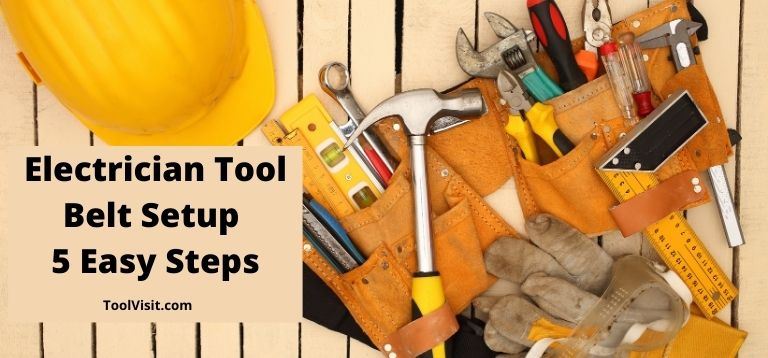
What is Electrician Tool Belt?
The belt is a tool holder. It can help electricians hold their tools and accessories so they don’t have to carry them or worry about losing them while working.
The belts are designed in such a way that it does not interfere with your work. Most of these belts have an adjustable strap to fit all body types and waist sizes.
Electrician Tool Belt Setup: 5 Easy Steps
A tool belt is a must-have for every professional. Make sure you’re ready to work with the right tools on hand and avoid any trouble or mishaps by keeping them all in one place your belt.
The best way to keep the tools orderly is to choose a multi-pocket tool belt. Various sizes and shapes of pockets in a belt assist you in placing all the equipment securely.
Ideal belts have two big pouches for the two sides. These bags are placed over the thigh and offer free movement during work. You can put comparatively large tools like scissors, pliers, rulers, tall bolts, and many more in these pouches.
Step 1) Select a Multi-pocket Tool Belt for Different Tools
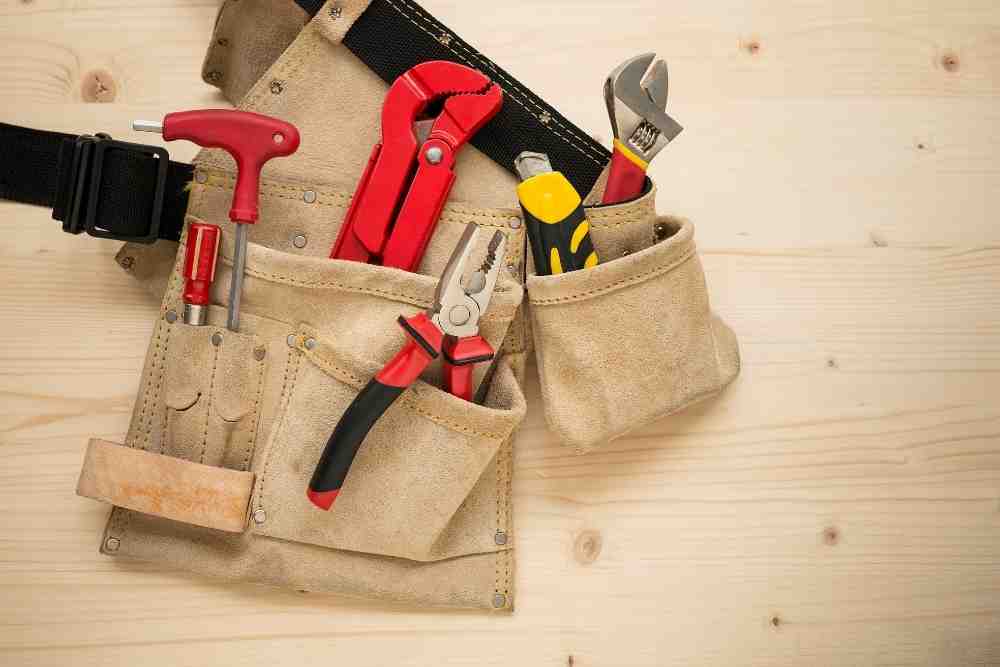
If you’re looking for a way to organize your tools, one of the most efficient methods is with a multi-pocket tool belt.
A well designed and crafted tool belt has various sizes pockets that will allow you to neatly place anything from pliers or scissors.
Ideal belts have two big pouches for the two sides. These bags are placed over the thigh and offer free movement during work.
You can put comparatively large tools like scissors, pliers, rulers, tall bolts, and many more in these pouches. You will found small pockets for small tools. Front pockets for the tape measure.
Hooks and loops for hammer, drill, and other heavy instruments.
If you are a carpenter or home renovator, you need many tools during any task, and your tool belt should also possess many pockets.
Step 2) Arrange the Major Tools for the Main Working Hand
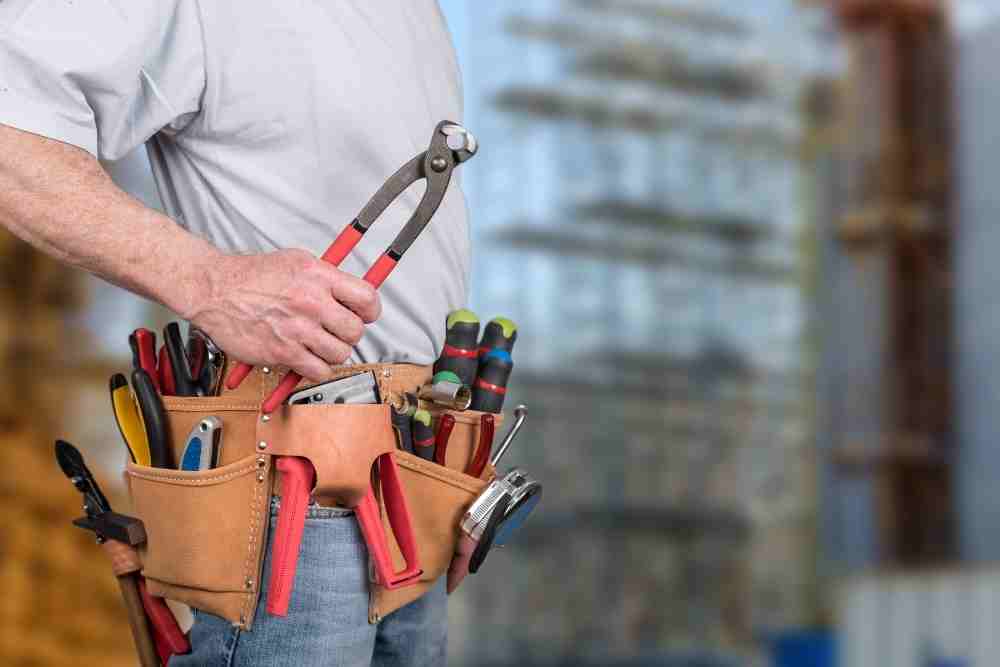
You have two hands, one is dominant, and the other is secondary. If you are a right-handed man, then the right hand is the dominant hand for you.
But for a left-handed person, the left hand is the dominant hand.
Divide your tools as most needed and less needed. Consider the weight of an instrument.
You feel uncomfortable holding the weighty devices by your secondary hand. There is a chance of an accident also.
Place the heavy tools by the dominant side. Get your tools and use them.
Keep the saw hammer, putty knife, chalk line, utility knife, screwdrivers set for the dominant side pouches and pockets.
It will ensure quick access to your tools. It is you who know better which utensils you will practice most.
Step 3) Keep Minor and lightweight Tools for Secondary Working Hand
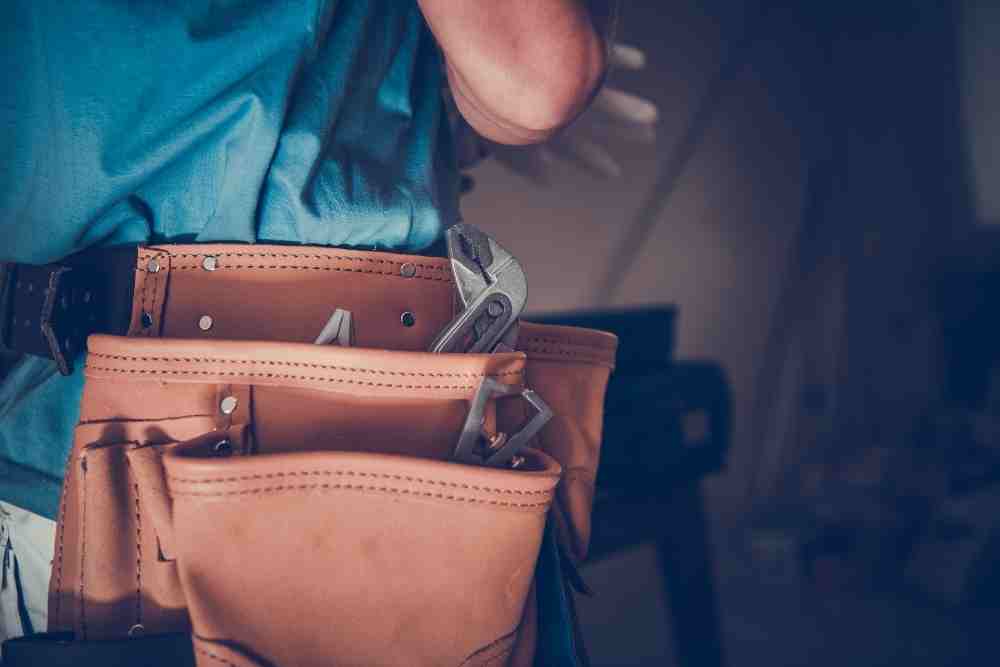
Your other side pouches and pockets are one kind of current storage. You can keep the nail sets, screw sets, chisel, square in these pockets.
Use cover or lid for small pockets to prevent dropping the nails and other pointy things from the height.
The secondary side pockets are for our secondary hand. Do not put the major instruments in these pockets. You may experience discomfort to grab the tools frequently by your secondary hand.
Use the hooks and loops for hammer, drill. You can add some pouches for more tools.
Step 4) Switch the Pockets for Necessary
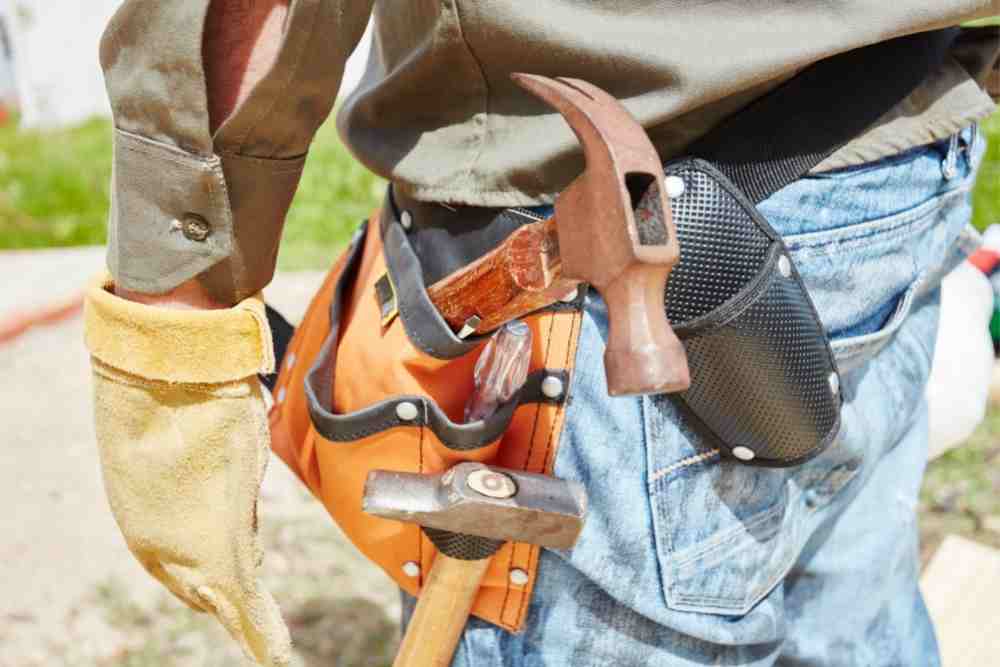
When you are working, try switching the pockets so that they face in a different direction.
This will relieve any discomfort from carrying tools on your tummy or waist and make it easier to get them out when needed.
Some belts have the facilities to remove the pockets and add more. Switch some compartments from side to back during climbing.
You can release some pouches temporarily so that you can climb swiftly.
Step 5) Use Suspenders for More Flexibility
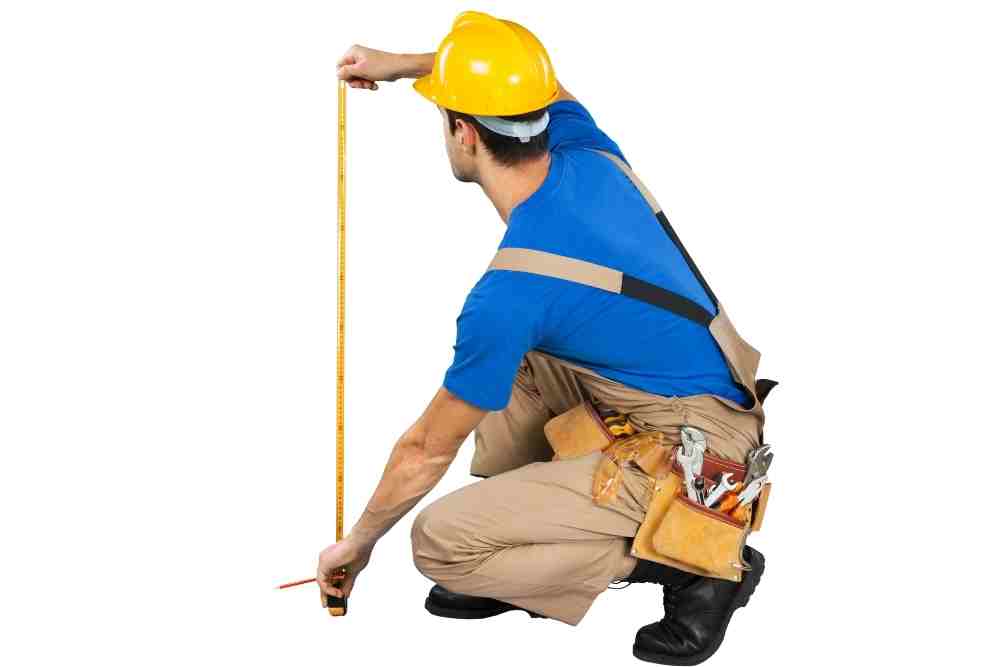
Suspenders are an essential part of a professional.
Using suspenders can spread the weight of a tool belt throughout the body. You can add hooks or pockets to keep tools on suspenders.
The belt is a must for suspenders in order to avoid the discomfort of back and shoulder pain.
Belt can fit tightly around your body, but make sure that it locks securely so you don’t need to worry about tools becoming too heavy or coming undone while working with them.
Suspenders will keep equipment from falling off and help disperse weight on your shoulders instead of just resting all the load on one side at once.
Why Using Tool Belt is Vital for Electrician?
It is important to wear an electrician tool belt because it can carry all the tools necessary for a day of work.
It is very convenient, since you only need to move it from one place to another when changing tasks in your job.
Electrician can carry the most necessary tools in their tool belt. If is a necessary portable assistant. It saves time and labor to search and get the gears from the toolbox during any work.
An electrician’s tool belt is a must-have for the job. Emptying pockets and carrying around heavy tools can be tiresome, but all your important gear will always be at hand with an authentic leather or canvas workman’s belt that doubles as both purse and back support.
What I carry in my tool belt are the tools according to my work profile. I usually arrange the most important tools close to my dominant hand.
There are different sizes of pockets with loops and buckles for secure holding of tools. As a result, I can simply get the right instrument within a short time in my hand.
What Tools Should I Have in My Tool Belt?
The electrician’s tool belt is filled with the tools that are used for everyday tasks. Tape measure and claw hammer are the most common tools an electrician needs for their tool belt.
Utility knives, screwdrivers, electrical testers all vary depending on what type of work is being done that day.
You can put all your tools in these different pouches. There are usually some large, sharp things like scissors and pliers that should be kept close to your body for safety reasons.
You’ll also find the other standard items such as tape measures, pencils, chalk lines, but you might want a utility knife or multi-screwdriver on hand too just in case of any emergencies.
What Should not Do With Your Tool Belt?
A professional voice needs to be maintained while working, not only with the tools but also with your body. Wear a belt that fits correctly and don’t over-tighten it so you can move around freely.
Do not keep extra and unnecessary tools in your tool belt. Always carry only the necessary implements as your current work profile.
Use leather, nylon, or nylon leather mixed component-made tool belt for security. They are durable, sturdy, and last for a long time.
Keep the sharp tool in the pouches. If you want to hang them on the hook, set the piercing side downwards.
Lock the belt buckle fit to your body. It will fasten the tools and your body.
Keep your hands free they can move and climb freely.
Organize the tools properly, which will not hamper your hand movements. Always keep your tools and belt clean after use.
Take out all the implements from the pouches after returning home. Check anything unnecessary that remains in the pockets. Clean it and dry it well.
FAQs
What tool belt do you use?
I like the Milwaukee 48-22-3850 tool belt. It has plenty of pockets and places to put tools, a hammer holder, adjustable shoulder straps so it doesn’t get in your way while you’re working, and it’s pretty comfortable.
Another a good tool belt to make the job easy is the Husky. It has all the pouches you need for your tools and a comfortable strap that fits around your waist.
What makes a good tool belt?
A good tool belt will have pouches and loops for screws, pliers, woodworking chisels, electrician’s tape measurer/marker and level.
A good tool belt should be durable, comfortable, and have a lot of pockets.
While the best tool belt will differ from person to person, I prefer smaller ones. They’re easier for me to carry around and are less likely to get stuck on objects.
How do you care for an electrician tool belt?
Over time, an electrician’s tool belt can become dirty and damaged. Before you clean it, make sure that it turned the power off to whatever circuit it is working on.
To maintain your electrician tool belt, ensure that you clean it periodically. Use a damp cloth to wipe off any dirt or dust from the surface of the belt and tools.
What is the chain for on a tool belt?
The chain on a tool belt is usually used to secure the tools in place. It’s important so that your tools don’t bounce out while you are working on something and someone could get hurt.
The chain is designed to hold tools, so it’s good for hanging hammers, screwdrivers, and other metal objects.
What tools should every electrician have?
Every electrician should have a tester, an outlet checker, and an ohm meter.
These tools are essential in the field because they allow you to determine whether or not there is power running through the wire before proceeding with your job.
A good electrician always needs to have the right tools. You’ll need a voltmeter, screwdrivers, wire strippers and more.
What makes a good tool belt?
A good tool belt keep track of all your tools when working on a job site. You can wear it around your waist or sling it over your shoulder, and the pockets make sure you always have access to everything you need.
Final Words
I think you are now confident enough about electrician tool belt setup. These are the fundamentals strategies for all professionals.
With right knowledge, there are many things which can be done by any individual or even without professional help from others but only if he/she has all the required tools at hand.
You may not believe me but I have seen so many people who don’t take their job seriously because they don’t have proper knowledge or tools with them due to which their performance goes down significantly and sometimes they end up damaging objects around them instead of doing good.
But you know, everyone has their style. Your need can vary from person to person. So, carry your necessary tools only. Do not store tools in a tool belt.